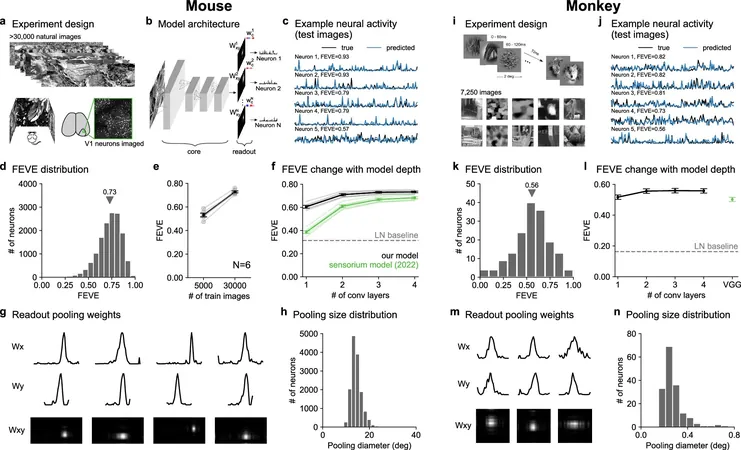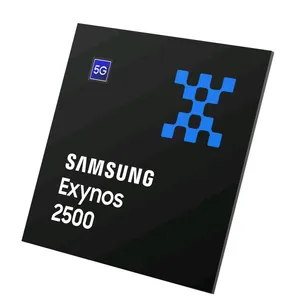
Revolutionary Two-Layer Neural Model Mimics Complex Brain Visual Processing
2025-07-02
Author: Siti
Unlocking the Mysteries of Visual Processing
Neuroscientists have long been captivated by the intricate dance of neurons in our brains, particularly when it comes to deciphering visual information. Imagine effortlessly distinguishing a delicate leaf from a rough rock—this extraordinary feat relies on how our neurons encode and process information. However, previous attempts to construct computational models for this task have often been overly complex, hampering researchers' understanding.
In a groundbreaking effort, a team from Janelia's Stringer and Pachitariu labs has unveiled a game-changing two-layer neural model that sheds light on how the primary visual cortex processes stunning amounts of visual data. Their findings have been published in the prestigious journal *Nature Communications*.
The Quest for Simplicity
Leading this innovative research, graduate student Fengtong Du emphasizes, "We are aiming to create a model that can accurately predict the visual responses of individual neurons." The primary visual cortex is often seen as the brain's first line of defense for visual data, making it crucial to comprehend how these neurons operate.
Janelia Group Leader Carsen Stringer articulates the broader implications of their work: "Our visual system continuously processes a wealth of information, undergoing intricate computations. Understanding the neuron interactions at this foundational level is essential for deciphering how the rest of the brain manages more complex tasks."
A Breakthrough Model Design
To construct their simplified model, the researchers recorded neural activity from over 29,000 neurons in a mouse's primary visual cortex while it was exposed to a staggering 65,000 images of natural textures, including leaves and rocks. Through meticulous testing, they identified a model that can recreate 75% of the visual information—an impressive leap from earlier models that could only reach about 50%.
The new model shines particularly in its architecture. It uses fewer convolutional layers, which traditionally serve as filters to extract visual features. While more layers can enhance a model's capability, they often obscure what features are being utilized. Instead, this innovative model employs wider layers and larger receptive sizes for its artificial neurons, achieving peak performance akin to larger four-layer models, yet with just two layers.
Individualized Neural Insights
This two-layer strategy enables the creation of "minimodels" for each neuron, allowing specific combinations of features unique to each neuron. Remarkably, these individual neuron minimodels are just as effective as their larger counterparts, providing researchers with an accurate, interpretable framework to explore the complexities of visual computation.
As they delve deeper into the nuances of visual processing, these advancements not only enhance our understanding of the brain but also pave the way for further explorations into how we perceive and interpret the world around us.

 Brasil (PT)
Brasil (PT)
 Canada (EN)
Canada (EN)
 Chile (ES)
Chile (ES)
 Česko (CS)
Česko (CS)
 대한민국 (KO)
대한민국 (KO)
 España (ES)
España (ES)
 France (FR)
France (FR)
 Hong Kong (EN)
Hong Kong (EN)
 Italia (IT)
Italia (IT)
 日本 (JA)
日本 (JA)
 Magyarország (HU)
Magyarország (HU)
 Norge (NO)
Norge (NO)
 Polska (PL)
Polska (PL)
 Schweiz (DE)
Schweiz (DE)
 Singapore (EN)
Singapore (EN)
 Sverige (SV)
Sverige (SV)
 Suomi (FI)
Suomi (FI)
 Türkiye (TR)
Türkiye (TR)
 الإمارات العربية المتحدة (AR)
الإمارات العربية المتحدة (AR)